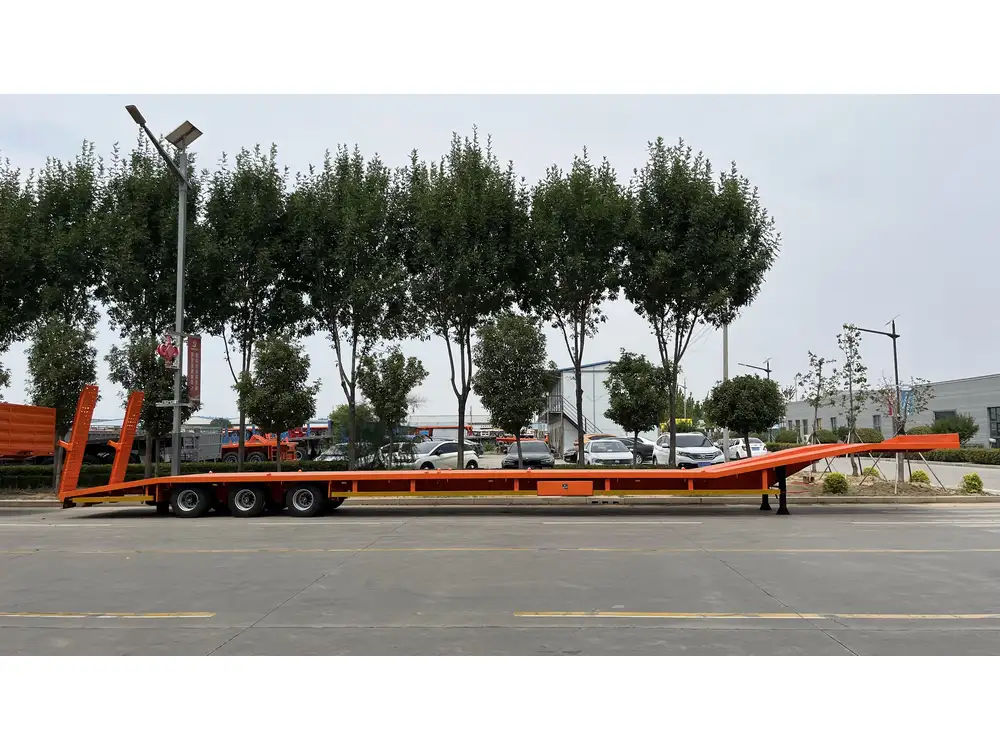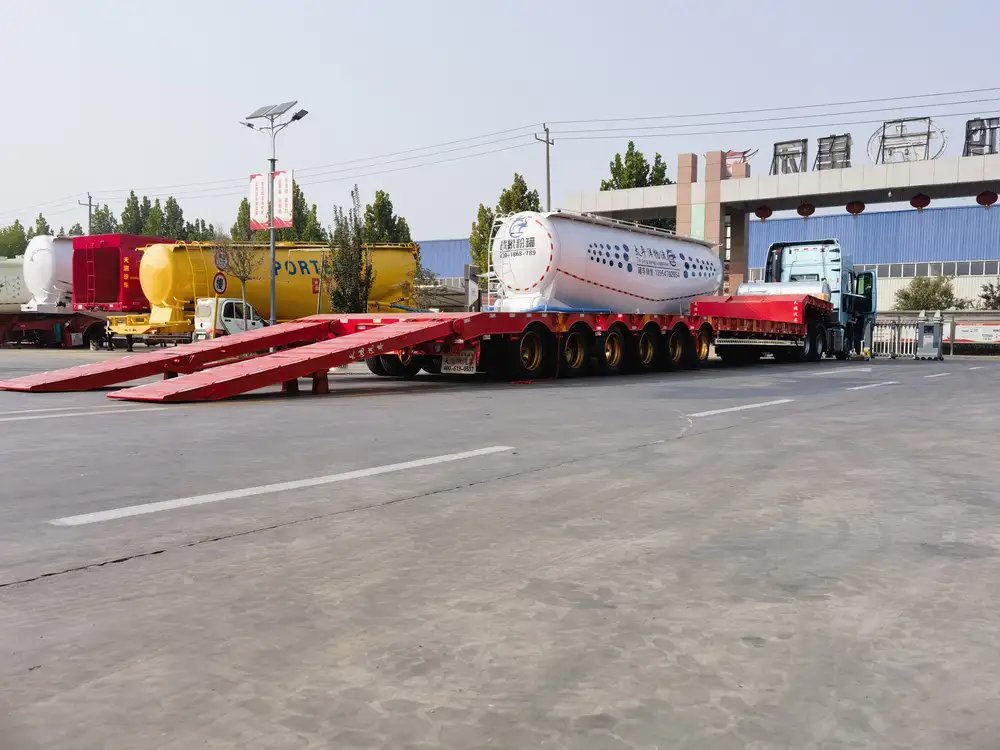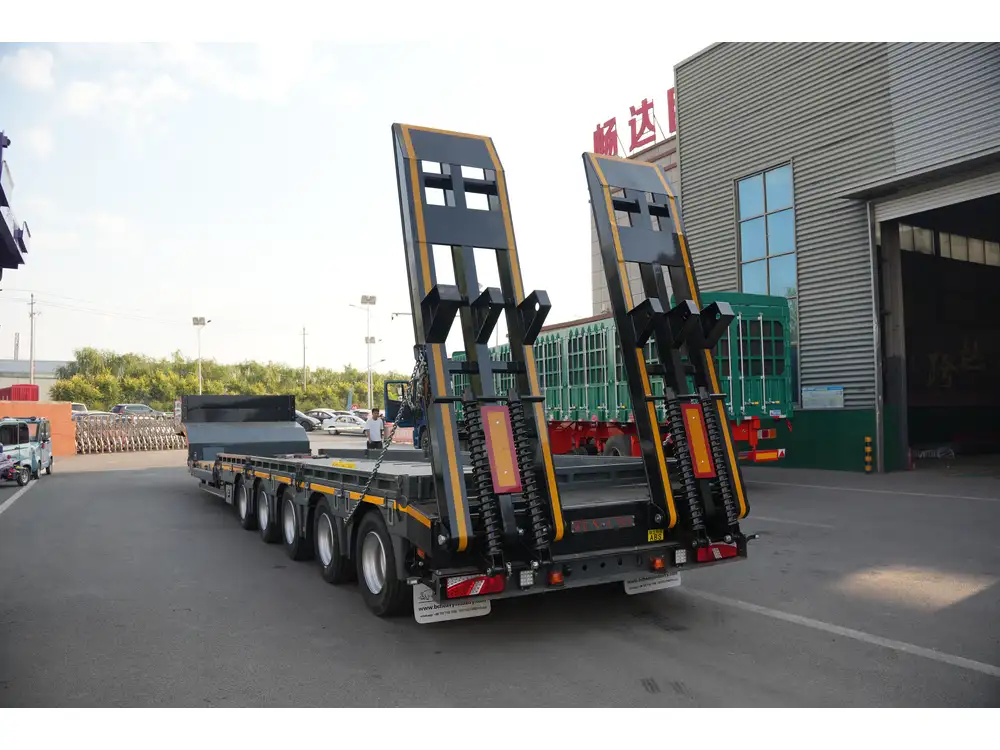When considering the investment in a 53-foot flatbed trailer, potential buyers are often grappling with two central questions: “How much does a 53-foot flatbed trailer cost?” and “What factors influence this cost?” This comprehensive guide will delve deeply into those inquiries, equipping you with the knowledge necessary to make informed decisions.
Understanding Flatbed Trailers: An Overview
Flatbed trailers serve as the backbone of transportation across various industries. These trailers are characterized by their flat decks, without sides or a roof, allowing for versatile loading capabilities. A 53-foot flatbed trailer typically adheres to standard dimensions for the freight and logistics market, making it a preferred choice for many businesses.
Advantages of Flatbed Trailers
- Versatility in Loading: Unlike enclosed trailers, flatbeds allow for easy loading and unloading from any side.
- Lightweight Construction: Many flatbed trailers utilize aluminum or other lightweight materials, enhancing fuel efficiency.
- Transporting Oversized Cargo: Their design accommodates oversized and irregular loads, widening the scope of operational capabilities.

Current Market Insights: Cost Breakdown
Price Range for 53-Foot Flatbed Trailers
On average, the cost of a 53-foot flatbed trailer can range between $30,000 to $65,000 or more. The variability in price is influenced by several factors, including materials used, trailer specifications, and market conditions.
| Trailer Type | Price Range |
|---|---|
| Basic Steel Flatbed | $30,000 – $40,000 |
| Aluminum Flatbed | $40,000 – $55,000 |
| Specialized Flatbed | $55,000 – $70,000 |
Factors Influencing Cost

1. Material Composition
- Steel vs. Aluminum: Steel trailers are generally cheaper but heavier, leading to higher fuel costs. Aluminum trailers are lightweight and more durable but come at a premium price.
- Coating and Treatment: Additional treatments for corrosion resistance add to the overall cost.
2. Specifications and Features
- Weight Capacity: Different models offer varying weight capacities; higher capacity trailers often incur greater costs.
- Extras: Features such as tarping systems, stake pockets, or toolboxes increase complexity and cost.
3. New vs. Used
- New Trailers: Purchasing a new 53-foot flatbed trailer involves higher initial costs, typically reflecting the latest technology and safety features.
- Used Trailers: While cheaper, used trailers may entail higher maintenance costs and shorter lifespans, depending on their previous usage.
| Condition | Price Range |
|---|---|
| New | $30,000 – $70,000 |
| Used | $15,000 – $40,000 |

Additional Costs to Consider
1. Registration and Insurance
State regulations govern the registration costs, which typically range from $300 to $600 annually. Furthermore, insurance is vital for protection against damages, with premiums varying dramatically based on the trailer’s value and the driver’s record.
2. Maintenance and Repairs
Budgeting for routine maintenance, including tire replacements, brake checks, and inspections, is essential. Expect to allocate approximately $1,000 to $5,000 annually for maintenance, depending on usage.

3. Financing and Interest Rates
Many businesses opt for financing to manage the initial expenditure. Factor in potential interest costs, which can significantly increase the total amount paid over time.
Analyzing the Purchase Process
Steps to Buying a 53-Foot Flatbed Trailer
- Determine Your Needs: Assess your specific transportation requirements, including load types and weights.
- Research Available Trailers: Compare products from different manufacturers to identify which models fit your needs.
- Budget Planning: Work out a comprehensive budget, including not just the purchase price, but also all associated costs.
- Test and Inspect: If purchasing used, a thorough inspection of the trailer is paramount to avoid unexpected expenses later on.
- Finalize Financing: If financing is necessary, shop around for the best rates and terms available.

Frequently Asked Questions
How Long Do Flatbed Trailers Last?
The lifespan of a flatbed trailer heavily relies on usage, maintenance practices, and construction quality. On average, a well-maintained trailer can last 15 to 20 years.
What’s the Best Way to Maintain a Flatbed Trailer?
Regular maintenance practices include:
- Routine Inspections: Check for wear and tear regularly.
- Washing: Road grime and salt can lead to corrosion.
- Brake Checkups: Ensure brakes are in optimal condition to prevent accidents.

Can I Customize My Flatbed Trailer?
Absolutely! Many manufacturers provide customization options, allowing you to add features like reinforced winch tracks, integrated lighting, or specific dimensions tailored for particular cargo types.
What Should I Look for in a Warranty?
A solid warranty can provide peace of mind. Look for covers on structural damage, manufacturing defects, and roadside assistance.
Are There Any Regulations for Flatbed Transport?
Transport regulations vary by state and country but generally include load securing mandates, weight limits, and vehicle safety requirements. Always consult local transportation authorities for compliance information.

Conclusion: Making an Informed Choice
Acquiring a 53-foot flatbed trailer can be a significant investment; however, understanding the costs, features, and maintenance requirements involved is crucial. By evaluating your needs and the variables influencing pricing, you can make an informed decision.
Whether you choose a new or used trailer, keeping a keen eye on market trends and regulations ensures that your investment serves your operational goals effectively. With the right preparation, you can navigate the complexities of purchasing a flatbed trailer and set the foundation for successful transportation endeavors.
For a personalized consultation or to explore our range of 53-foot flatbed trailers, feel free to reach out to us. Your journeys begin with the right equipment, and we’re here to help ensure you get the best value possible!



